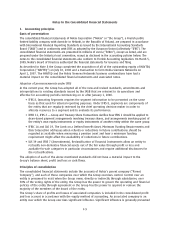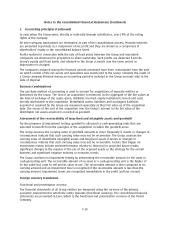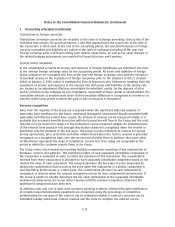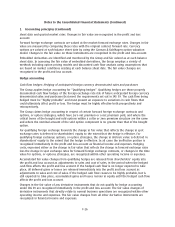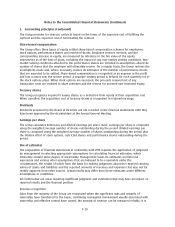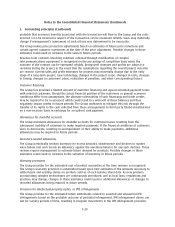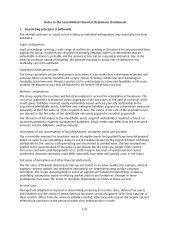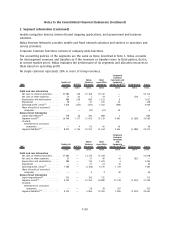Nokia 2008 Annual Report Download - page 161
Download and view the complete annual report
Please find page 161 of the 2008 Nokia annual report below. You can navigate through the pages in the report by either clicking on the pages listed below, or by using the keyword search tool below to find specific information within the annual report.1. Accounting principles (Continued)
Cash flow hedges: Hedging of foreign currency risk of highly probable business acquisitions and other
transactions
The Group hedges the cash flow variability due to foreign currency risk inherent in highly probable
business acquisitions and other future transactions that result in the recognition of nonfinancial
assets. When those nonfinancial assets are recognized in the balance sheet the gains and losses
previously deferred in equity are transferred from equity and included in the initial acquisition cost of
the asset. The deferred amounts are ultimately recognized in the profit and loss as a result of
goodwill assessments in case of business acquisitions and through depreciation in case of other
assets. In order to apply for hedge accounting, the forecasted transactions must be highly probable
and the hedges must be highly effective prospectively and retrospectively.
The Group claims hedge accounting in respect of forward foreign exchange contracts, foreign currency
denominated loans, and options, or option strategies, which have zero net premium or a net
premium paid, and where the terms of the bought and sold options within a collar or zero premium
structure are the same.
For qualifying foreign exchange forwards, the change in fair value that reflects the change in spot
exchange rates is deferred in shareholders’ equity. The change in fair value that reflects the change in
forward exchange rates less the change in spot exchange rates is recognized in the profit and loss
account within financial income and expenses. For qualifying foreign exchange options the change in
intrinsic value is deferred in shareholders’ equity. Changes in the time value are at all times
recognized directly in the profit and loss account as financial income and expenses. In all cases the
ineffective portion is recognized immediately in the profit and loss account as financial income and
expenses.
Hedges of net investments in foreign operations
The Group also applies hedge accounting for its foreign currency hedging on net investments.
Qualifying hedges are those properly documented hedges of the foreign exchange rate risk of foreign
currency denominated net investments that meet the requirements set out in IAS 39. The hedge must
be effective both prospectively and retrospectively.
The Group claims hedge accounting in respect of forward foreign exchange contracts, foreign currency
denominated loans, and options, or option strategies, which have zero net premium or a net
premium paid, and where the terms of the bought and sold options within a collar or zero premium
structure are the same.
For qualifying foreign exchange forwards, the change in fair value that reflects the change in spot
exchange rates is deferred in shareholders’ equity. The change in fair value that reflects the change in
forward exchange rates less the change in spot exchange rates is recognized in the profit and loss
account within financial income and expenses. For qualifying foreign exchange options the change in
intrinsic value is deferred in shareholders’ equity. Changes in the time value are at all times
recognized directly in the profit and loss account as financial income and expenses. If a foreign
currency denominated loan is used as a hedge, all foreign exchange gains and losses arising from the
transaction are recognized in shareholders’ equity. In all cases the ineffective portion is recognized
immediately in the profit and loss account as financial income and expenses.
Accumulated fair value changes from qualifying hedges are released from shareholders’ equity into
the profit and loss account only if the legal entity in the given country is sold, liquidated, repays its
share capital or is abandoned.
F17
Notes to the Consolidated Financial Statements (Continued)




